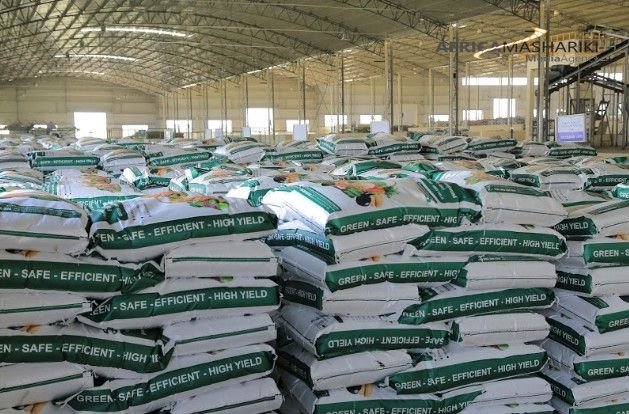Two fertiliser facilitiess set for launch
Zimbabwe is set to launch two fertiliser facilities soon in a move that is expected to boost domestic production of the critical nutrients key to improving crop yields.
The commissioning of the fertiliser granulation plant at the Zimphos factory in Harare and the revival of the limestone and gypsum mine in Rushinga by G&W Industrial, in the Mashonaland Central province comes at a time when there are growing calls to boost national output in the wake of global supply disruptions and price spike resulting from the ongoing military conflict between Ukraine and Russia.
President Mnangagwa is soon expected to commission the two fertiliser facilities.
G&W and Zimphos are both subsidiaries of Chemplex Corporation, a unit of the Industrial Development Corporation.
“We have revived G&W with the latest technology in Rushinga and also ready to open granulation plant in Zimphos; both operations are expected to be launched by the President,” Industry and Commerce Minister Dr Sekai Nzenza told this publication.
In light of the Russia-Ukraine conflict, Zimbabwe is already looking for alternative source markets for fertiliser. The nearly seven-month conflict has partly led to cuts in fertiliser shipments; prices reaching record highs, with far-reaching consequences for farmers.
With Russia’s status as a primary exporter of ammonia, knock-on effects from sanctions imposed on the country by western countries over its military operations in Ukraine have disrupted the supply chain, triggering concerns over food security.
Last year, Russia and Belarus accounted for 40 percent of global exports of potash. Russia also accounted for 22 percent of global exports of ammonia gas, 14 percent of global urea exports, and 14 percent of mono ammonium phosphate.
“We are targeting to increase production of fertiliser so that we will be able to insulate ourselves from unforeseen situations like the ongoing conflict in Russia,” said Nzenza.
Ramping up local fertiliser production is urgent and critical since the price of fertilisers have shot up by 100 percent as a result of the Russia and Ukraine crisis, economist say.
In 2020, the Government launched a five-year road map meant to reduce fertiliser imports by supporting local companies. Chemplex and Sable Chemicals, the country’s major producers of fertiliser have already come up with strategies to reduce imports in the medium term.
According to the roadmap, Sable is targeting to increase its annual production capacity to 240 000 tonnes by 2025, from the current installed capacity of 90 000 tonnes. Chemplex Corporation is looking to increase production to 100 000 tonnes per year from 80 000 tonnes.
Zimbabwe has 12 fertiliser companies with the newer ones being involved in making blended NPK compounds. Out of these, three are involved in the primary production of raw materials. These are Dorowa Minerals which mines phosphate rock in Buhera. The phosphate converted to fertiliser grade by ZimPhos in Harare.
Sable Chemical in Kwekwe produces AN from imported ammonia following decommissioning of its electrolysis plant three years ago. At the secondary level, three companies are involved in granulation and these are ZFC, Windmill and FSG.
Windmill also operates blending plants.
FSG, Omnia, ETG and several other companies operate blending plants whereby granulated materials are physically mixed to make various grades of NPK compounds.-ebusinessweekly








